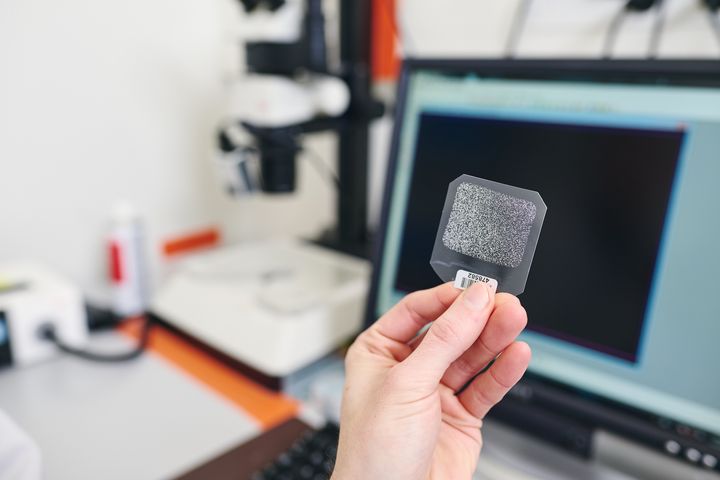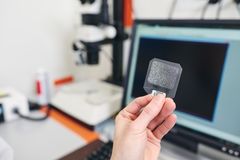The Nordic countries use slightly different methods to prevent radon harm
Radioactive radon is a problem affecting human health in the Nordic countries. A recent report provides an overview of the management of radon-related risks in different countries and examines the similarities and differences between the methods.

A report by Nordic-Nat (Nordic Working Group on Natural Ionizing Radiation) states that radon is an issue that poses a threat to health, especially in Finland, Norway and Sweden. These countries have similar concentrations of radon in indoor air of apartments and in drinking water. In Denmark, the situation is less problematic, and in Iceland the radon-active concentrations in both indoor air and drinking water are very low overall.
In Finland, the reference value for radon level in the design and construction of buildings is 200 becquerels per cubic metre of air (Bq/m 3) and 300 Bq/m3 for existing buildings. If the radon level in indoor air exceeds these values, it is recommended to take corrective measures. In Denmark, the reference value is 100 Bq/m3 and in Sweden 200 Bq/m3. In Norway, the action level for radon is 100 Bq/m3 and the maximum allowed concentration is 200 Bq/m3.
There are also differences between the countries in the interpretation of the measurement results. In Finland and Norway, the measurement results are used to estimate the annual average radon level, which is then compared with the reference value. In other countries, the comparison is made directly with the measurement result. In Denmark and Sweden, the reference value is compared to the average of measurements carried out in the apartment, whereas in Norway the value only applies to measurements taken in the living room and bedroom.
Tuukka Turtiainen, Senior Inspector at the Radiation and Nuclear Safety Authority, says that the comparison of the different Nordic countries demonstrates that the differences in regulations and measurement methods are understandable and in accordance with the Basic Safety Standards Directive adopted by the European Union in 2013.
“Finland has a higher reference value for radon in workplaces than other Nordic countries, but we carry out significantly more radon monitoring in workplaces than the other Nordic countries and actively organise random checks,” says Tuukka Turtiainen.
Significant differences in limit values for drinking water
Recommendations and requirements for drinking water quality also differ between the Nordic countries. The absolute quality requirements for radon levels imposed on waterworks are either 100 becquerels per litre (Bq/l) or 1,000 Bq/l. The quality target, on the other hand, is either below 100 or 300 Bq/l. There are no actual requirements for private wells, but the quality recommendations vary between 500 and 1,000 Bq/l. In Finland, the recommendations and requirements for drinking water are the most permissible among the Nordic countries.
Senior Inspector Tuukka Turtiainen says that one explanation for the differences is that the EU directive on the radioactivity of drinking water gives the maximum value a range of 100—1000 Bq/l. The current understanding is that radon in drinking water causes only a little radiation exposure to the digestive system. The lungs are the most exposed to radiation even in drinking water as radon is released from the water into the indoor air, such as in the shower, when washing laundry or in other water use. Turtiainen emphasises that the radiation exposure of most Finns is definitely from radon in indoor air.
Founded in 2016, Nordic-Nat’s (Nordic Working Group on Natural Ionizing Radiation) mission is to identify common challenges related to the monitoring of natural radiation, implement development projects and draw up joint position statements. The group offers a platform for exchanging experiences in order to promote monitoring work and communications. Collaboration also facilitates the efficient sharing of expensive laboratory resources. The members of the working group come from the radiation safety authorities of Finland (STUK), Sweden (SSM), Denmark (SSI), Iceland (GR) and Norway (DSA).
Keywords
Contacts
Media contacts
Tel:+358(10)8504761Tuukka TurtiainenSenior Inspector
Tel:09 759 88 473Images

Links
Alternative languages
Subscribe to releases from Säteilyturvakeskus (STUK)
Subscribe to all the latest releases from Säteilyturvakeskus (STUK) by registering your e-mail address below. You can unsubscribe at any time.
Latest releases from Säteilyturvakeskus (STUK)
STUK publicerade en forskningsrapport om kärnsäkerhetssamarbete som började när Sovjetunionen kollapsade och slutade när det ryska anfallskriget började4.11.2025 14:08:28 EET | Pressmeddelande
Strålsäkerhetscentralen hjälpte ryssarna att förbättra säkerheten vid sina kärnkraftverk i trettio års tid från början av 1990-talet. Samarbetet upphörde när Ryssland anföll Ukraina. Historieforskaren Petri Paju har skrivit om erfarenheterna av samarbetet i en forskningsrapport som Strålsäkerhetscentralen publicerat.
STUK julkaisi tutkimusraportin ydinturvallisuusyhteistyöstä, joka alkoi Neuvostoliiton romahduksesta ja päättyi Venäjän hyökkäyssodan alkuun4.11.2025 14:08:28 EET | Tiedote
Säteilyturvakeskus auttoi venäläisiä parantamaan ydinvoimalaitostensa turvallisuutta kolmenkymmenen vuoden ajan 1990-luvun alusta alkaen. Yhteistyö loppui Venäjän hyökättyä Ukrainaan. Historiantutkija Petri Paju on kirjoittanut yhteistyön kokemukset Säteilyturvakeskuksen julkaisemaan tutkimusraporttiin.
STUK published a research report on nuclear safety cooperation that began when Soviet Union collapsed and ended in Russian war of aggression.4.11.2025 14:08:28 EET | Press release
The Radiation and Nuclear Safety Authority helped Russia improve the safety of their nuclear power plants for thirty years from the beginning of the 1990s. This cooperation ended following Russia’s invasion of Ukraine. History researcher Petri Paju has reported on the experiences of this cooperation in a research report published by the Radiation and Nuclear Safety Authority.
MetroPOEM och spåren av föroreningar30.9.2025 11:21:28 EEST | Pressmeddelande
Det europeiska forskningsprojektet MetroPOEM, som utvecklat mätning och spårbarhet av radioaktiva och icke-radioaktiva miljöföroreningar, har nått sina mål.
MetroPOEM - saasteiden jäljet selville30.9.2025 11:21:28 EEST | Tiedote
Radioaktiivisten ja ei-radioaktiivisten ympäristösaasteiden mittaamista ja saasteiden jäljitettävyyttä kehittänyt eurooppalainen tutkimusprojektiprojekti, MetroPOEM, saavutti tavoitteensa.
In our pressroom you can read all our latest releases, find our press contacts, images, documents and other relevant information about us.
Visit our pressroom